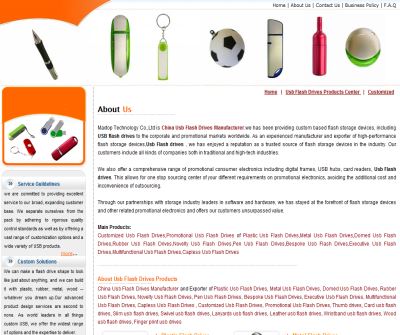Background on the Universal Serial Bus (USB flash drives)
Back in 1995, it was becoming quite clear that the serial and parallel ports on the PC were outliving their usefulness. While Ethernet was becoming generally available, it was still rather expensive to implement and not all devices needed to be shared on a Local Area Network. Thus it was deemed that a new serial bus should be designed to take on the role of the old serial and parallel ports. By January of 1996, USB 1.0 was born. The new serial bus protocol supported two signaling rates: low speed (1.5Mbps) and high speed (12Mbps) Unfortunately, there was practically no operating system support and virtually no hardware available with which to operate. Microsoft, ultimately, did create OEM versions of Windows 95 with USB support, but the support written in was barely usable.In May 1998, Apple released the original Bondi Blue iMac, which was the first personal computer to completely abandon legacy ports in favor of USB. Microsoft released Windows 98 that year with much better USB support and by September a new revision of USB (version 1.1) was released. Increasing numbers of USB devices started to hit the market and made certain that USB was here to stay. Unfortunately, it quickly became evident that 12Mbps was not enough throughput for devices like CD writers and external Hard drives. By 2000, USB 2.0 was created with a theoretical data transfer rate of 480Mbps. With the 40-fold speed increase, USB became a viable option for fast, portable storage devices.
Unfortunately, the phrase “USB 2.0″ does not necessarily mean 480Mbps of throughput. USB 2.0 now has three different signaling rates: Low Speed (1.5Mbps), Full Speed (12Mbps), and Hi-Speed (480Mbps). The marketing and advertising departments of product manufacturers like to put the words “USB 2.0″ on all of their product packages. This can be really deceptive since most consumers will see USB 2.0 and compare it to an older product with the USB 1.1 moniker and think “USB2 must be better than USB 1.1!†Naturally, the consumer is unaware of the difference between “Full Speed†and “High Speed†(this is something akin to the old naming snafu with floppy disks: does “double density†or “high density†hold more?).
Consequently, as a warning to the reader by mentioning that if it does not say “USB 2.0 Hi-Speed†or does not feature the logo on the left, it ain’t very fast. All the drives found in this review are USB 2.0 Hi-Speed drives. While USB 1.1 (a.k.a. USB 2.0 Full-Speed) drives still exist, the price of Hi-Speed USB 2.0 drives have come down so much recently that there is no really good reason to consider the slower drives. For the sake of comparison, benchmark scores from one such drive are included in this review.
Tag:china usb flash drives Manufacturer,china usb flash drives Supplier,china usb flash drives factory,china usb flash drives explorer,china usb flash drives
